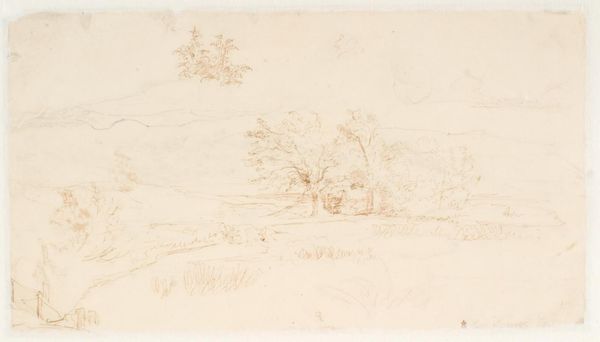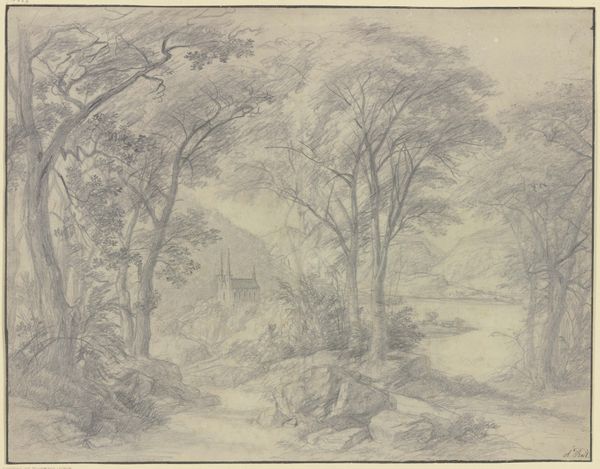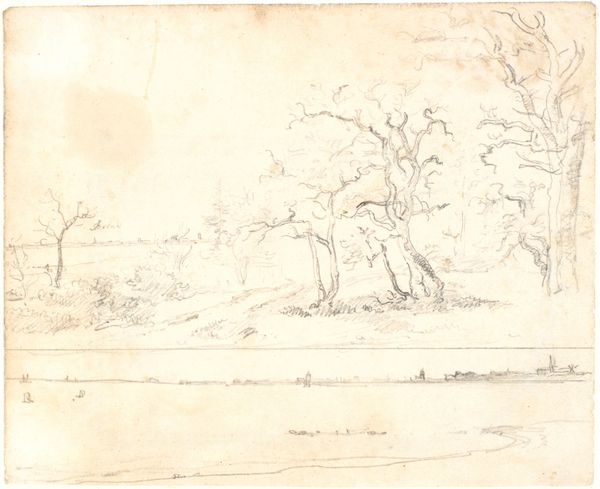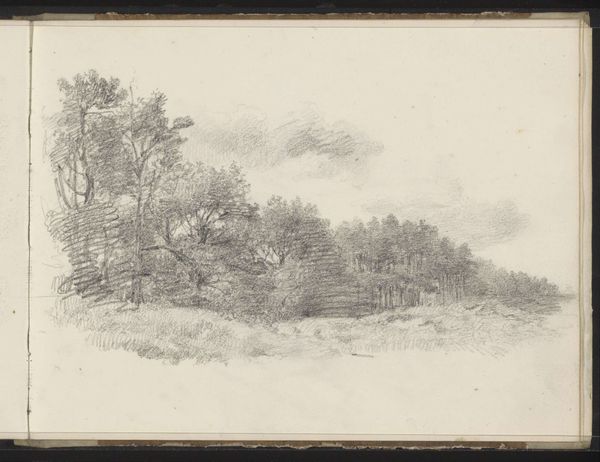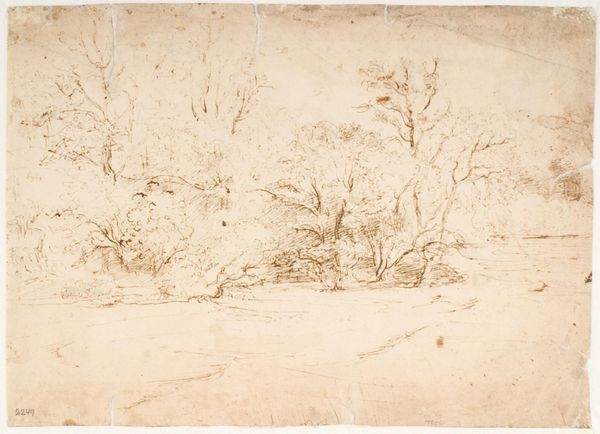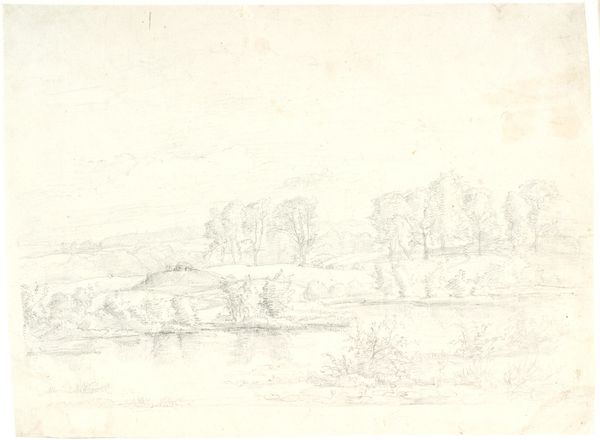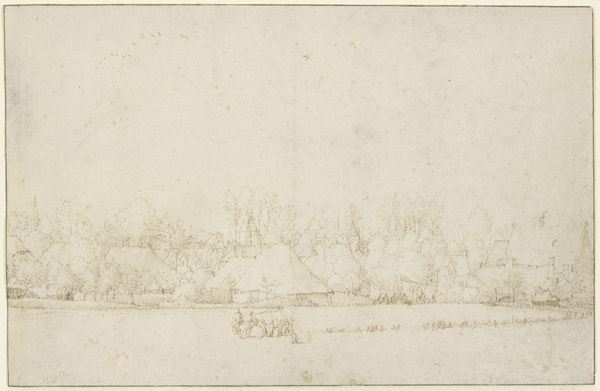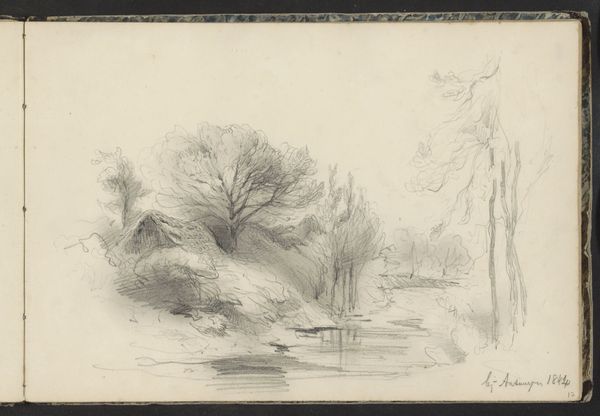
drawing, pencil
#
drawing
#
landscape
#
romanticism
#
pencil
#
northern-renaissance
#
realism
Dimensions: 160 mm (height) x 179 mm (width) (bladmaal)
Curator: Dankvart Dreyer created this landscape sketch, entitled "Udsigt over et bakket og trærigt landskab," in the 1840s. Editor: Immediately, the composition strikes me as serene, almost ethereal, despite its seemingly humble medium—just pencil on paper. There's a real balance here; the strong verticals of the trees anchor the airy open space. Curator: Absolutely. Note how Dreyer employs a soft, almost atmospheric perspective. The gradual fading of detail towards the horizon implies vastness, aligning the artwork with the romanticist interest in depicting the sublime power of nature. Editor: And look at the density of the pencil work in the foreground, drawing your eye into the open meadow! This sketch feels surprisingly realistic, a faithful record of place... I find this fascinating because Dreyer produced this in a cultural context hungry for depictions of the ideal landscape of Denmark. Curator: Precisely. Dreyer lived during a pivotal time for Danish national identity. Artists like him turned to landscape painting, not just to capture scenery, but to establish the cultural importance of Danish land in asserting their culture on a world stage, imbuing images of landscapes like these with socio-political meanings. The Royal Danish Academy of Fine Arts certainly perpetuated this idea in that time period! Editor: Fascinating, how such delicate linework can be a powerful affirmation of national identity. But beyond that context, on a formal level, there's something incredibly engaging about how the lack of colour focuses attention solely on the texture and forms rendered through light and shadow, doesn't it? Curator: Yes, the interplay of light becomes paramount, emphasizing the raw beauty, particularly in how the bare branches reach into the muted sky. Perhaps this simplicity lends it universality? Editor: Exactly. Though tied to a particular moment and nation, it speaks volumes about the enduring allure of natural space. Curator: Well, looking at it from a historical perspective enriches that experience. Editor: Indeed, both lenses heighten the aesthetic appreciation.
Comments
No comments
Be the first to comment and join the conversation on the ultimate creative platform.

